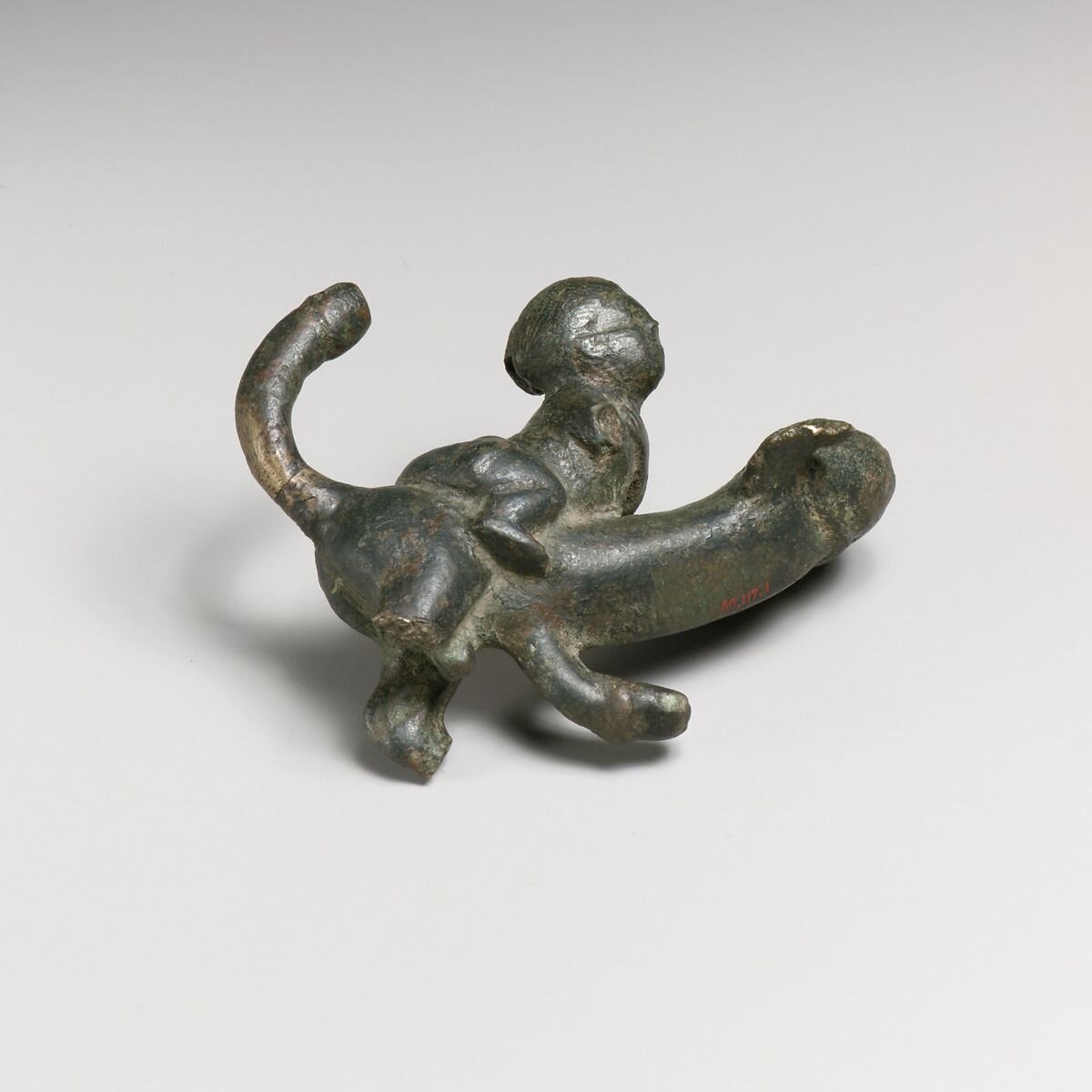That’s Fascinating…
Exploring Phallic Amulets in the Ancient and Modern Contexts
Protective amulets depicting the divine phallus were common in ancient Rome. Worn as pendants or used as a decorative motif to ward off the evil eye, the "fascinus" (or “fascinum”) was typically represented as a penis combined with various human or animal body parts such as wings, legs or testicles.
This example (below, right) is from the collection of the Metropolitan Museum of Art: “This ornament probably hung as a charm from a tintinnabulum, a wind chime adorned with bells and intended to ward off evil. These phallic tintinnabula were doubly apotropaic, the protective effect of the phallus strengthened by the ringing of the bells. The phallus on these objects could take many different forms, transforming into a wolf, dog, beast, lion, monster, or winged creature.”
Contemporary winged phallic amulet; House of Good Fortune Collection
Phallic amulets (Palad khik) are also common in Thailand, where they are worn as symbols of fertility that also serve a dual protective purpose. Made of wood or brass, they are sometimes combined with monkeys, elephants or tigers. Men typically wear this amulet underneath their clothes and misaligned with their actual reproductive organ so that the amulet will divert any ill will aimed at their family jewels.
Sigmund Freud had a collection of phallic amulets, which is so … you know, ON BRAND for him.
Thai Phallic Amulet
But Everything Old is New Again
While the ancient practice of displaying genitalia may seem a little strange to our modern sensibilities, The House noticed recently that displaying phallic and testicular amulets appears to have made a comeback.
First, with “Truck Nuts” — these are silicone testicles that hang on the back of one’s vehicle to so other drivers can tell the truck’s sex. A related product, “Croc Nuts” is a pair of 3D-printed miniature testicles that can be affixed to the back of lightweight foam footwear. And taking this idea to its logical conclusion is, of course, “Cock on a Croc,” for those who prefer to recall the protective properties of the fascinus more literally and directly.
Bonus Image: Three Tintinnabula
Credit: From the left: A97578, Solid bronze phallic amulet in form of pripus with hindquarters of horse mounted by figure of woman, 3 bronze pendants suspended from base, Graeco-Roman, no provenance details, 100BC-400. A67895, Carved white alabaster phallus with bronze wings, Roman, from Italy, 100BC-100. A154056, Solid bronze phallic amulet in form of pripus with hindquarters of horse, suspension loop and chain at top and 2 pendants attached to base, Graeco-Roman, no provenance details, 100BC-400. Credit: Science Museum, London. Attribution 4.0 International (CC BY 4.0)
Etymological Bonus
Incidentally, the origin of the English word “fascinate” derives from the Latin verb verb fascinare — i.e. "to use the power of the fascinus." In other words, to practice magic or bewitch through the power of the divine phallus. Fascinating, no?







